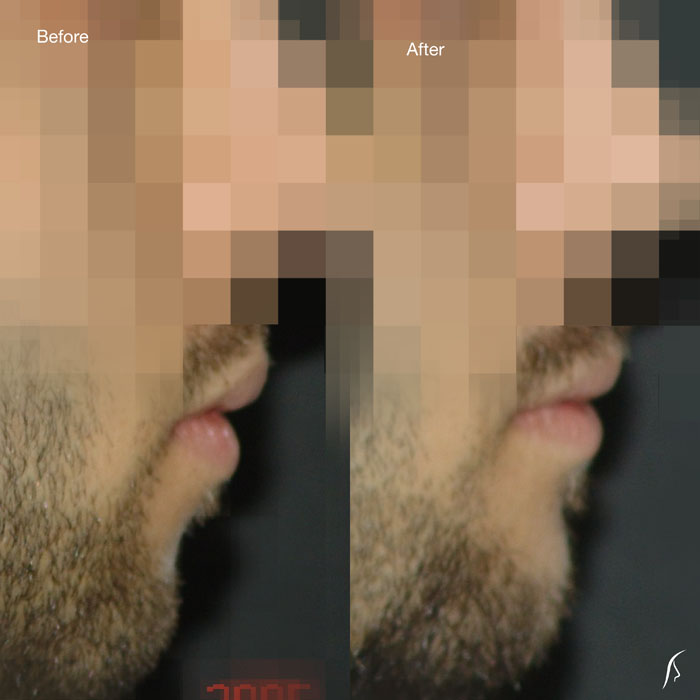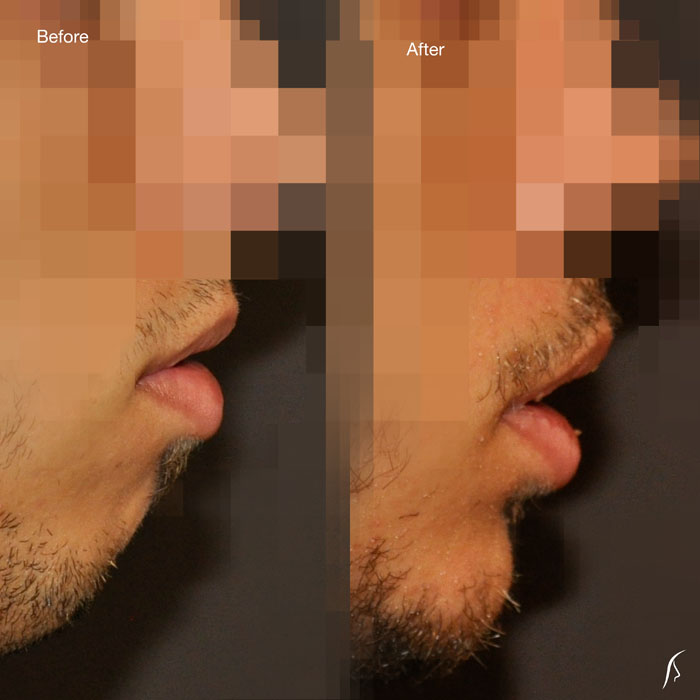Facial Implants
FACIAL IMPLANTS OF THE CHEEKS, CHIN AND JAW
IF YOU'RE CONSIDERING FACIAL SURGERY...
Plastic surgeons use facial implants to improve and enhance facial contours. Frequently, these implants will help provide a more harmonious balance to your face and features so that you feel better about the way you look.
There are many implants available, manufactured from a variety of materials. They may help strengthen a jawline or bring the chin or cheekbones into balance with the rest of the face.
What to expect from a facial implant
Facial implants can enhance your appearance and bolster your self-esteem. If you are looking for improvement, not perfection, in your appearance and are realistic in your expectations, you may find that a facial implant is the right choice for you.
Plastic surgeons will frequently use such implants to bring better balance to the features of a younger patient. For instance, a teenage girl may want her nose reshaped or her chin brought forward so that these traits are better proportioned. The more mature patient may choose to have an implant placed in conjunction with another cosmetic procedure. For example, during a facelift, a patient may wish to have implants placed over the cheekbones to help restore a more youthful appearance. Implants may also be selected to fill out a face that appears "sunken" or tired.
All surgery carries some uncertainty and risk
Facial implants can produce some remarkable changes. Problems rarely occur, but you need to be informed about such possibilities.
A facial implant can shift slightly out of alignment and a second operation may be necessary to replace it in its proper position. Infection can occur with any operation. If infection were to occur around a facial implant and did not clear up after treatment with antibiotics, the implant might have to be temporarily removed and replaced at a later time. Other, less-frequent risks may be associated with certain implants. Be sure to ask your facial plastic surgeon for a description of the risks associated with the procedure in which you are interested.
Be sure you understand the details of the proposed surgery, including the cost and what to expect during your recovery.
Types of anesthesia
In some cases, facial implant surgery may require only local anesthesia combined with a sedative. However, more frequently, a general anesthesia may be recommended.
Chin surgery
Insertion of a chin implant may take anywhere from 30 minutes to an hour. During the procedure, the surgeon selects the proper size and shape implant to enhance your appearance and inserts it into a pocket over the front of the jawbone. The small incision to create the pocket and insert the implant is placed inside the mouth (along the lower lip) or in the skin just under the chin area.
Usually, the chin is taped after surgery to minimize swelling and discomfort. Sutures in the skin will be removed in five to seven days. If an intra-oral incision is used, the sutures will dissolve.
Recovering from chin surgery
You will experience some discomfort and swelling in the affected area for several days. It's normal to experience some temporary difficulty with smiling and talking. Black and blue marks may be visible around the chin and neck. Your plastic surgeon will instruct you about dental hygiene, eating and any restrictions to your activities after surgery.
Cheek surgery
Cheek implant surgery usually takes about 30 to 45 minutes. When cheek implants are being placed in conjunction with another cosmetic procedure, such as a facelift, forehead lift or eyelid surgery, the implants may be inserted through the incisions made for those procedures. Otherwise, an incision will be made either inside your upper lip or your lower eyelid. A pocket is then formed and an implant is inserted.
After surgery, a dressing will be applied to minimize discomfort and swelling. The severity and duration of such side effects may vary, especially if another cosmetic procedure was performed at the same time.
Recovering from cheek surgery
Your plastic surgeon will provide you with instructions about post-operative care. There will be dietary restrictions as well as limitations to your activities. Again, these instructions will vary, especially if another procedure was performed along with your implant surgery. However, you should be aware that your ability to move your mouth and lips may be diminished temporarily. Stitches used to close the incisions inside your mouth usually dissolve within about 10 days.
Lower-jaw surgery
Insertion of a jaw implant usually takes about one to two hours. Internal incisions are made on either side of the lower lip to provide access for creating a pocket into which the lower-jaw implant can be inserted. Dissolving sutures are used to close the incisions.
Recovering from jaw surgery
Swelling is sometimes significant immediately following surgery, usually peaking 24 to 48 hours afterward. Although most of the significant swelling will subside over a period of several days, prolonged mild swelling may prevent your final facial contour from becoming apparent for several months.
During the healing phase, your activities and diet will be restricted. Your ability to smile, talk or move your mouth in any way may be limited for several days to weeks following surgery. Your plastic surgeon will instruct you about dental and oral hygiene during your recovery.
Getting back to normal
Remember, with any facial surgery, you may feel and look better in a short period of time. However, it may not be advisable to participate in certain activities -- especially activity that may result in the face being jarred or bumped -- for several weeks. It's best to check with your plastic surgeon about such matters.
Your new look
You may not be able to accurately evaluate your appearance for weeks, or perhaps even months. Give yourself plenty of time to get used to your new look.
You may be surprised to find that most people won't recognize that you've had facial implant surgery -- only that you


